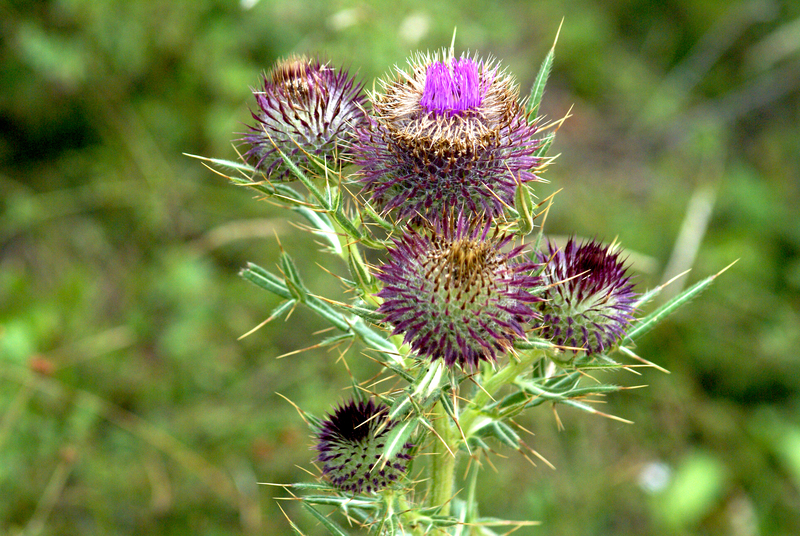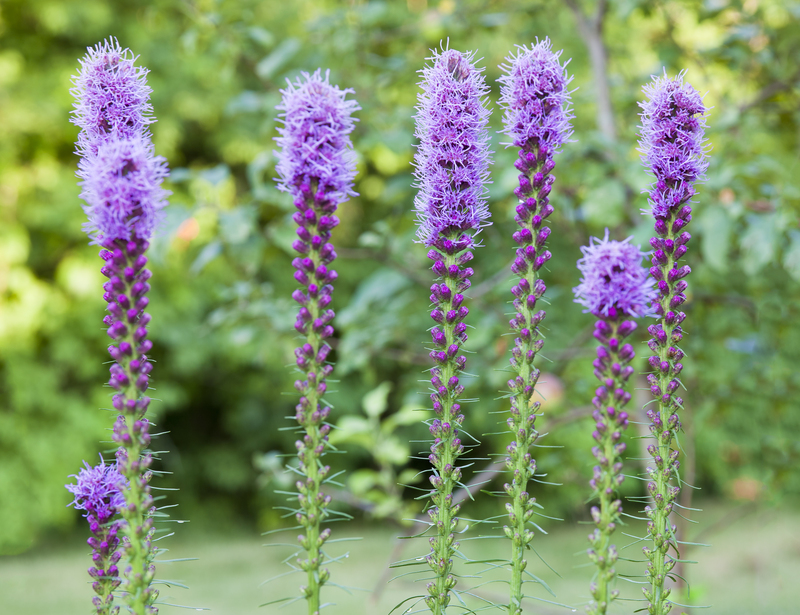DIY Ways to Tackle a Tree Stump in Your Garden
Dealing with leftover tree stumps in your garden can be a challenging task. Whether a tree was removed due to disease, landscaping plans, or storm damage, the stump that remains is often an eyesore and sometimes a potential hazard. Fortunately, there are numerous DIY solutions to address this problem. In this informative guide, we'll explore a variety of DIY ways to tackle a tree stump in your garden, ranging from eco-friendly methods to hands-on removal techniques. By the end of this article, you'll be equipped with all the knowledge needed to restore your garden to its former beauty.
Why Remove a Tree Stump?
Some people wonder if it's necessary to remove a tree stump at all. Here's why tackling tree stumps is often beneficial for your garden:
- Improved Aesthetics: Old stumps can ruin the appearance of an otherwise beautiful landscape.
- Prevents Pest Infestation: Decaying wood attracts termites, ants, and other pests.
- Safety: Stumps can cause people to trip and injure themselves, especially in high-traffic areas.
- Prevents Regrowth: Many tree species can regrow from stumps, leading to unwanted sprouts.
- Easy Lawn Maintenance: Lawn mowers and garden tools can be damaged by hidden tree stumps.

Preparation: What You Need Before Tackling the Stump
Before you get started, gather some essential tools and supplies. Having the right equipment is crucial for safe and effective stump removal.
- Work gloves and safety glasses for protection
- Hand saw, chainsaw, or pruning saw (depending on stump size)
- Spade or shovel
- Axe or mattock
- Drill with large drill bits
- Stump removal chemicals (optional)
- Water and mulch
- Heavy-duty tarpaulin (optional for certain methods)
- Wheelbarrow for debris disposal
Safety First!
Always commence any DIY tree stump removal project with safety in mind. Wear protective gear, keep children and pets away from the work area, and read the instructions for any chemicals or power tools you plan to use.
1. Manual Removal: Digging Out the Stump
Manual removal is the most straightforward tree stump removal method--especially for smaller stumps. It requires time and muscle but is chemical-free and eco-friendly.
Steps to Manually Remove a Tree Stump:
- Use a spade or shovel to dig around the stump, clearing soil to expose as many of the roots as possible.
- Cut through exposed roots using an axe, mattock, or pruning saw.
- Continue digging and severing roots until you can wiggle and free the stump completely.
- Leverage the stump out of the ground, using a crowbar or a long piece of timber to gain extra force if needed.
- Fill the hole with soil and compost to prevent a sinkhole and encourage new growth in your garden.
This DIY method is best for stumps with a diameter of less than 12 inches. For larger, deeper-rooted stumps, consider alternative approaches below.
2. Rotting the Stump Naturally: Chemical-Free Decomposition
If you prefer a low-effort, eco-friendly tree stump removal technique, encourage the stump to break down naturally. This process hastens decomposition, allowing nature to do most of the work for you.
How to Speed Up Stump Decay at Home:
- Drill several deep holes (at least 1/2-inch wide and 8-10 inches deep) into the stump's surface and sides.
- Fill these holes with water to moisten the wood, then add a nitrogen-rich fertilizer (bone meal or compost works well).
- Cover the stump with soil and a thick layer of mulch or sawdust to keep it moist, which will encourage fungi and microbes to speed up decomposition.
- Check regularly and reapply water and mulch as needed.
- After several months, the stump will soften and can be broken apart with an axe or mattock.
This method is simple, non-toxic, and safe for children and pets. However, it does require patience--stump rot can take from six months to two years, depending on the tree species and size.
3. Using Stump Removal Chemicals Safely
For those in a hurry, stump removal chemicals can speed up the rotting process. These products typically contain potassium nitrate and are widely available in garden centers and online.
Steps for Chemical Stump Removal:
- Use a drill to bore holes across the stump's surface and along its sides.
- Pour the chemical stump remover into each hole, following the manufacturer's instructions.
- Add water to each hole to activate the compound.
- Cover the stump with a tarp and allow it to sit. The chemicals will work over several weeks to soften the wood.
- Once the stump has become spongy, use an axe or shovel to break it apart and remove the remains.
Always read and follow safety instructions on any chemical product, keep children and pets away, and avoid runoff into flower beds. Stump remover is an effective solution for those seeking a relatively quick and minimal-effort process.
4. Burning the Stump (Where Permitted)
Burning a tree stump is another effective DIY removal method but may be restricted in your area due to fire risks. Check with your local authorities before proceeding and familiarize yourself with all fire safety protocols.
Burning a Stump Safely:
- Drill deep holes into the stump and pour in kerosene or fuel oil (not gasoline).
- Let the stump soak for several days to ensure absorption.
- Build a wood pile or charcoal mound atop the stump and ignite it carefully.
- Keep a garden hose and extinguisher nearby at all times.
- Monitor the burn continuously--do not leave it unattended.
- Once burnt, remove the ashes and fill the hole with topsoil.
Note: Burning should only be attempted where safe and legal. Always wear protective gear.
5. Epsom Salt Method - An Organic, Gentle Approach
Using Epsom salt to remove a tree stump is a favorite among organic gardeners, as it is both effective and environmentally friendly. Epsom salt draws out moisture, hastening decay.
Steps:
- Drill multiple holes into the stump--deep and wide for best results.
- Pack the holes tightly with Epsom salt, then add water to moisten.
- Cover the stump with a waterproof tarp to retain moisture and keep out rain.
- Repeat the process every few weeks.
- After a few months, the stump should become brittle and soft, making it easy to break apart and remove.
This natural stump removal technique is ideal if you are not pressed for time and want to avoid chemicals that could affect your soil or plants.
6. The Boiling Water Kill Method
For a simple, chemical-free alternative, you can use boiling water to kill the stump's root system and accelerate decay.
Instructions:
- Drill several deep holes into the stump for maximum water penetration.
- Boil a large pot of water and immediately pour it into the holes and around the base.
- Repeat over several days for best results.
- The intense heat destroys living tissue, killing roots and helping rot set in faster.
This method is safe, easy to perform, and perfect for small stumps or as a supplementary technique.
7. Utilizing Machinery and Power Tools
For larger, deeply-rooted stumps, mechanical removal is sometimes necessary. While renting a stump grinder or using a chainsaw is not entirely "hands-off", many DIYers find it offers the best combination of speed and effectiveness.
How to Use a Stump Grinder Effectively:
- Rent a stump grinder from your local home improvement store.
- Read the manual thoroughly and wear full protective gear (gloves, glasses, ear protection).
- Clear debris and rocks from around the stump.
- Follow the grinder's instructions to systematically grind down the stump and major roots.
- Dispose of sawdust and fill the remaining hole with soil.
Although not as eco-friendly as natural decay, this is the most effective solution for massive or stubborn stumps--saving you weeks or months of waiting.
Creative Alternatives: Stump Repurposing
If the idea of total removal feels daunting, why not get creative? Here are a few imaginative ways to turn a garden stump into a unique landscaping feature:
- Transform it into a rustic garden table or stool
- Hollow out the top and use it as a planter
- Turn it into a whimsical fairy house for children
- Use it as a base for bird feeders or baths
- Decorate with mosaic tiles for a striking focal point
Sometimes, the best way to tackle a tree stump is to embrace its presence and incorporate it into your garden design!
Aftercare and Restoring Your Garden Space
Once you've succeeded in removing the tree stump from your garden, address the resulting area with fresh soil and compost. This will:
- Prevent ground settling and trip hazards
- Discourage weeds or new growth from the old roots
- Replenish the soil for easy reseeding or planting
Need Inspiration?
Plant grass seed to blend the area into your lawn, or add a new flower bed, shrub, or ornamental feature to fill the space.

Frequently Asked Questions About DIY Stump Removal
How long does it take to remove a tree stump yourself?
It depends on the chosen method and the stump's size. Manual digging can take a few hours, while chemical or natural methods may require several months. Using mechanical equipment is fastest but may not suit everyone's budget or comfort level.
Is it better to grind or remove a stump?
Grinding is less invasive and leaves roots in the ground, which is fine for most gardens. Full removal is ideal if you want to replant in the exact spot or are worried about regrowth.
Are there eco-friendly ways to remove stumps?
Absolutely. Epsom salt, mulch, boiling water, and manual excavation are all green alternatives for tree stump removal.
Should I hire a professional?
For very large or tricky stumps near buildings or utilities, hiring a tree surgeon might be best. But most home gardeners can effectively handle small to mid-sized stumps on their own.
Conclusion: Choose Your DIY Stump Removal Strategy
When it comes to DIY ways to tackle a tree stump in your garden, there's a solution for every scenario--from manual labor and organic decomposition to chemical and mechanical removal. By assessing your stump's size, your budget, the time you can commit, and your personal preference for eco-friendliness, you can confidently select the best approach for your outdoor space.
Reclaim your garden and enjoy a more beautiful, safer, and usable landscape by applying one of these comprehensive stump removal methods. Your garden--and your back--will thank you!